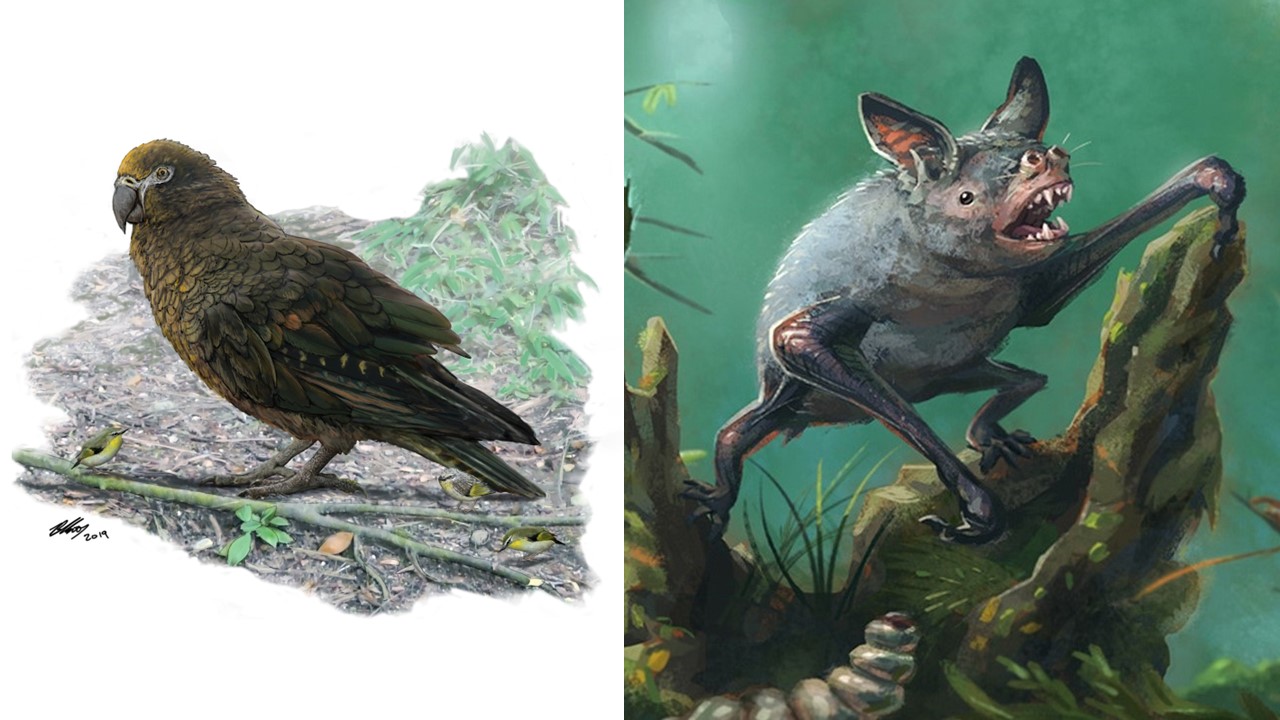Media release
From:
Kākāpō are the true ancient species of New Zealand, not the Kiwi or the takahē
Aotearoa New Zealand’s true ancient species are animals like Kākāpō, small wrens, bats and freshwater limpets, not recent Aussie immigrants like kiwi, moa and takahē.
This is the conclusion reached by an international team of palaeontologists after two decades of groundbreaking research at the St Bathans fossil site in Central
Otago recently published in Geobios.
The team, including Canterbury Museum Senior Curator Natural History Dr Paul Scofield, have been excavating the large St Bathans site since 2001, uncovering thousands of fossil bones. The site, which was once at the bottom of a large prehistoric lake, offers the only significant insight into Aotearoa‘s non-marine wildlife from 20 million years ago.
The new research summarises the extraordinary creatures discovered in the more than 9,000 specimens collected across 23 years. Exotic creatures identified at the site include a giant parrot that the scientists nicknamed “Squawkzilla”, two mystery mammals, flamingos, a 3-metre crocodile, a giant horned turtle and a giant bat.
Paul Scofield, who has been involved in digs at St Bathans since 2002, said the research had prompted a rethink of our native fauna.
“Many of the species that we thought of as iconic New Zealand natives – a classic example would be the takahē – we now know are relatively recent blow-ins from Australia, arriving only a few million years ago.’’ he said.
“Twenty-three years of digging at St Bathans has changed our idea about the age of the New Zealand fauna and the importance of some animals over others. For example, until now we thought that birds like kiwi and moa were among the oldest representatives of New Zealand fauna.
We are now realising that the Kākāpō, tiny New Zealand wrens and bats, and even a bizarre freshwater limpet, are the real ancient New Zealand natives.”
The research concludes that this menagerie of exotic animals was wiped out by dramatic temperature drops over the last about 5 million years.
Lead author Flinders University Associate Professor Trevor Worthy said 23 years of research at St Bathans had transformed our understanding of how non-marine vertebrate life in New Zealand looked around 20 million years ago during the Early Miocene era.
“It’s exciting to be involved in a project that continues to make absolutely fresh discoveries about what animals lived in New Zealand’s lakes and rivers, and the forests around them, during this critical period in history.”
“Every year we find new specimens. Finds that reveal amazing new species that we couldn’t have imagined when we first started working there.”
Study co-author Dr Vanesa De Pietri of the University of Canterbury said the animals that lived in New Zealand 20 million years ago were very different to what we have now.
“For example, we had another giant eagle that was not related to Haast’s Eagle. We had a whole bunch of songbirds that were quite different, crocodiles and even potentially a small mammal that we’ve nicknamed the waddling mouse. We are still in the middle of our research into understanding exactly what that was.”
The latest research paper was a collaboration between Flinders University, Canterbury Museum, Te Whare Wānanga o Waitaha University of Canterbury, The University of Queensland, University of Copenhagen and University of New South Wales.
Multimedia









 Australia; New Zealand
Australia; New Zealand



